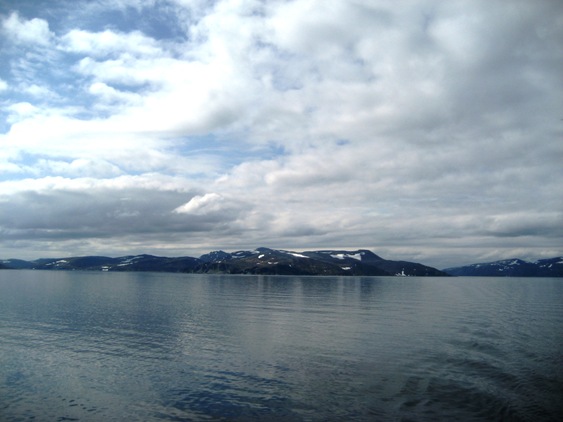

The sheer ambition of our driving agenda, now that we had specific detailed maps in front of us, was appalling. To keep up with the program, we would have to drive 500 km or more each day. Some vacation! :-( It was the friendly innkeeper in Leknes who suggested an alternative and helped make reservations. We would board the Hurtigrute in Harstad early in the morning, we decided, and disembark at Tromsø that afternoon, cutting a couple of hundred kilometers from the overall trip. The Hurtigrute, or coastal steamer, was once a government-run mail and shipping route that has become a major tourist attraction ("The Most Beautiful Cruise in the World"). We had tried months before to get a cabin and cruise up the coast for part of the trip, but the cruise had already been booked up completely on the days we needed to travel. However, a day trip does not require a cabin, and, because of its roots as a mail-carrier, the Hurtigrute is required to take day passengers. As long as there was room for the car, we were on.
Once on board, I asked whether we might stay on board overnight and disembark the following day at Honnigsvåg, the closest port to the North Cape, our farthest destination. This would essentially cut the driving in half, since we would drive only the return to Tromsø. Yes, they told us, you can stay on board. But... there are no cabins. In a rare return to our hippie days, we would be sleeping on benches or chairs in the public lounge. We were elatedly grateful. We assured them that a cabin would not be necessary (though one did ultimately turn up).
As well as relaxing, the trip was beautiful.
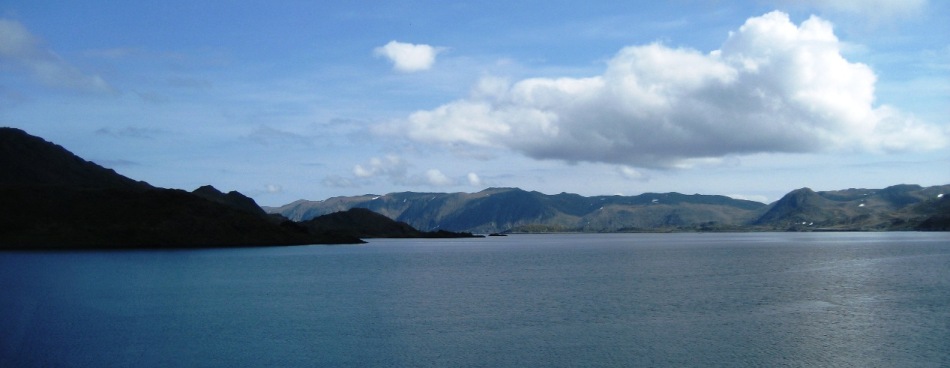
Relaxed after a day and a half of cruising and a night of good sleep in (finally!) a dark room, we drove over the tundra of the North Cape (Nordkapp) to reach the one farthest northernmost point in Europe (71 degrees 10 minutes 21 seconds North latitude) just two days before the summer solstice.
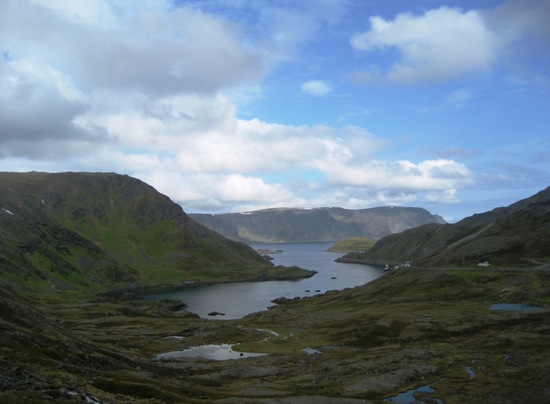
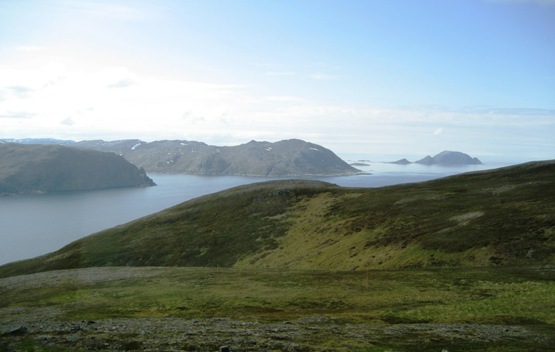
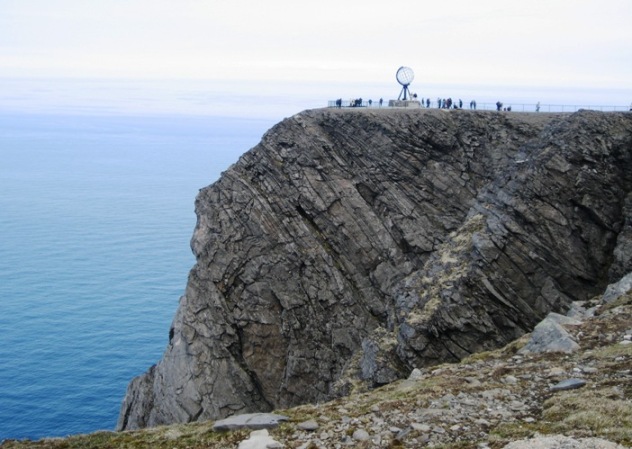
Of course, the one small problem was that we were there at 1 in the afternoon instead of at midnight. So, for the record, here is a postcard documenting the midnight sun at Nordkapp.
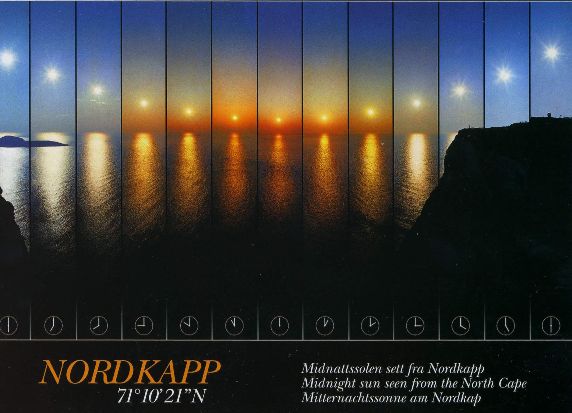
It took us a while to recognize that those animals we occasionally saw by the side of the road--goatlike and yet not goats, cowlike and yet not cattle, certainly not sheep--were in fact reindeer. And only a little longer to understand that, as between reindeer and automobiles, the reindeer have the right of way.
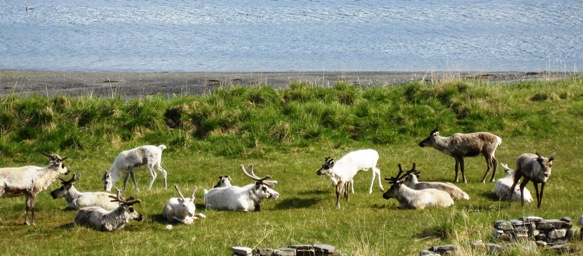

On the way from the North Cape to Alta, we passed through a recently completed tunnel 7 kilometers (5 miles) long. This was not the longest tunnel in Norway (that one is 24 kilometers long!), but impressive nontheless. Signs along the way spring out of the darkness to announce the number of kilometers traveled so far and the number left to go. We also passed across one of the most idyllic and beautiful high-mountain passes we've ever seen. It was hard to photograph because we were already up among the peaks of the mountains so that they did not seem to tower over us so much as to shoulder in closely.

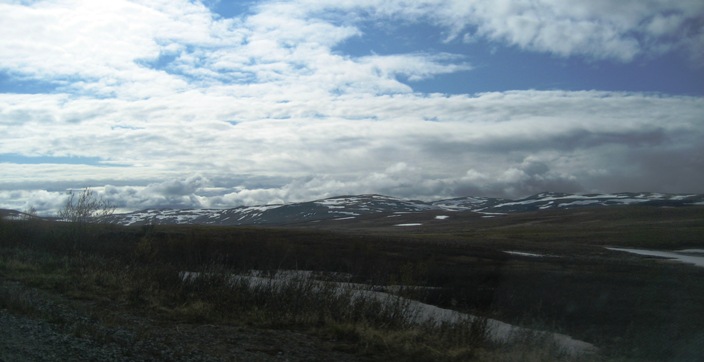
Poor Alta! Continually inhabited for at least the last six thousand years, the present-day city was completely destroyed by the Nazis as they retreated. The destruction served no purpose except spite. Today, Alta would be almost unremarkable but for its World-Heritage six-thousand-year-old rock carvings, which are worth the visit, both to see the carvings themselves, and to experience this far-northern landscape that, despite its latitude, has been so hospitable to humans for so long.
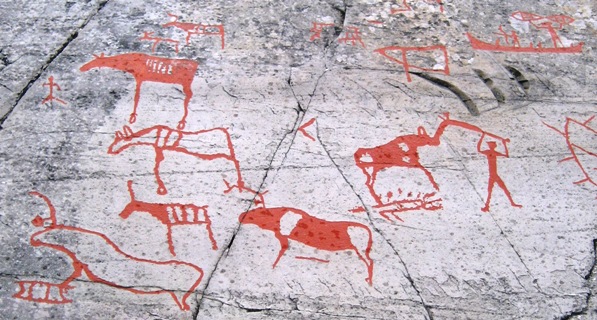
Return to the Norway trip overview
Back to the previous day's travel (Lofoten Islands)
On to the next day's travel (Alta to Tromsø)